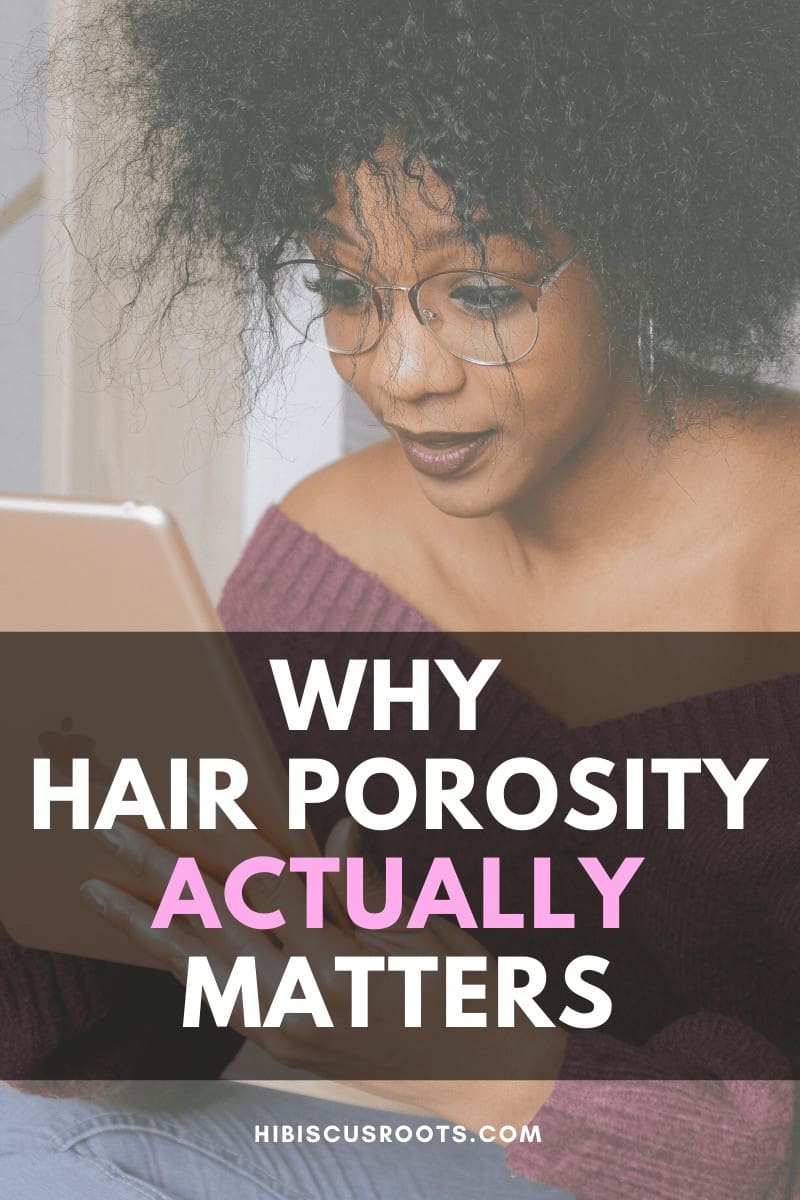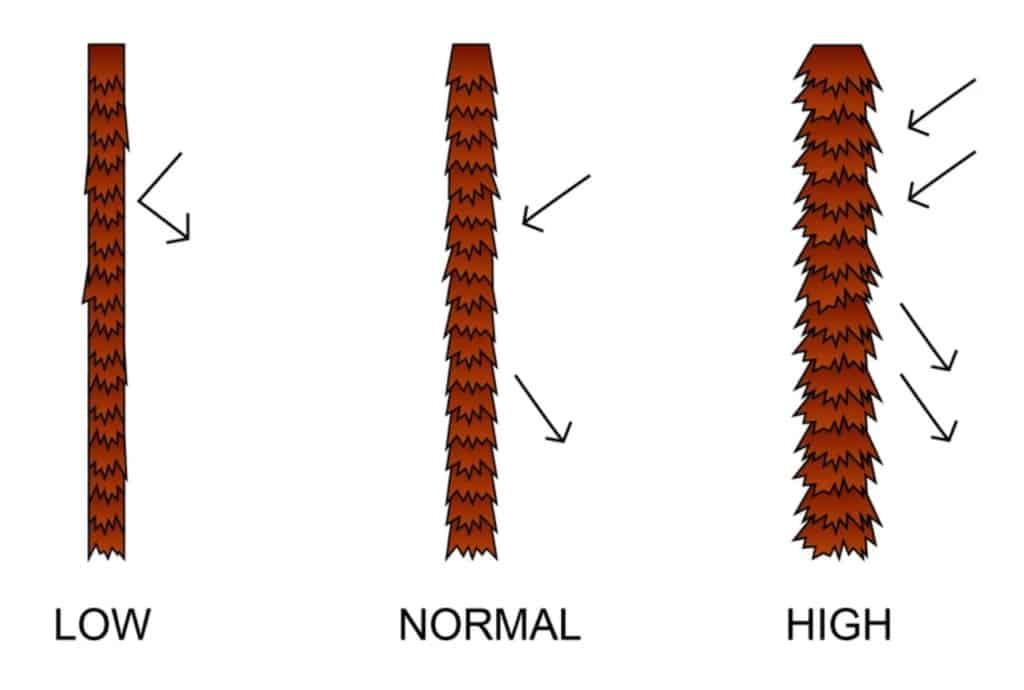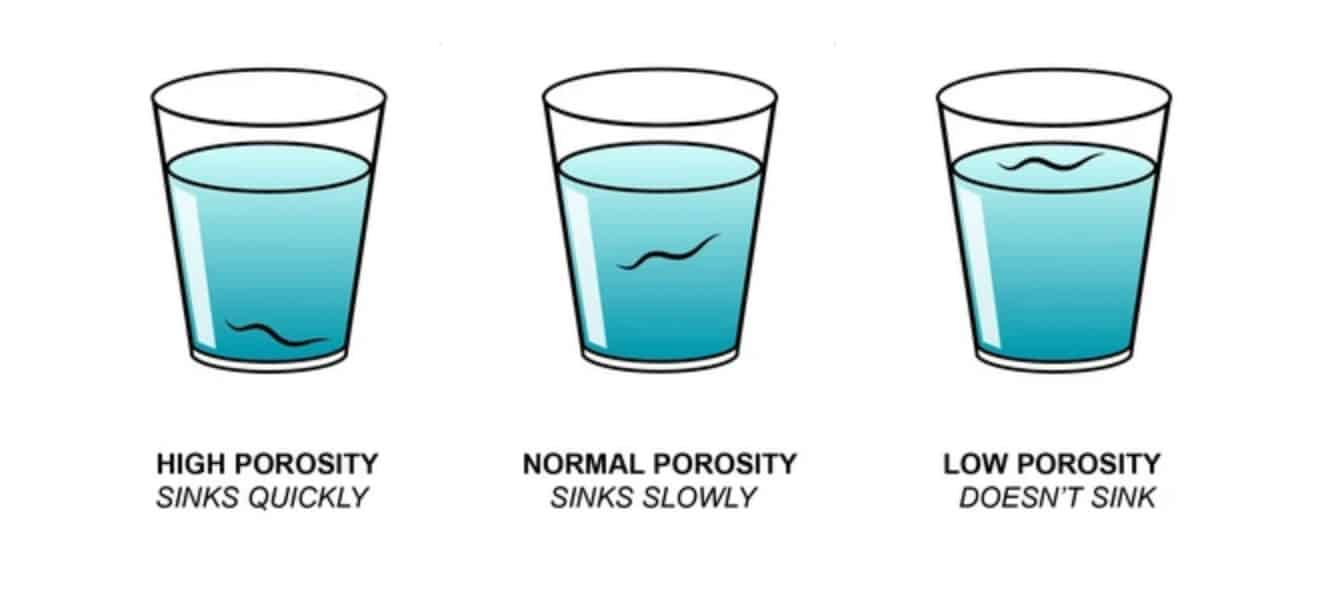Updated: March 15, 2021

The first time I saw videos about hair porosity, I thought it was just another crazy fad that would eventually pass. I found out over 4 years into my own natural hair journey just how important it actually is. If this is your first time hearing about porosity, and you were curious enough to look it up; don’t be like me. Keep reading! 🙂
For a long time, I thought I had the whole natural hair thing down. I knew my hair type, followed all the top 4c hair bloggers, and wrote down all their favorite products. My hair responded well enough for the first few years after my big chop and I was so sure my hair regimen was fool-proof.
Right around the 3rd year, however, I started to hit the dreaded plateau. I read countless articles on how to care for natural hair and get it out of a growth plateau. I followed the golden rules religiously.
- Always wear a silk scarf to bed
- Moisturise and seal hair daily
- Deep condition after each wash
- Co-wash to avoid shampooing too regularly
- Never detangle dry hair
- Finger detangle primarily. Use a wide-tooth comb Only if necessary
- Favor water-based products for moisture moisture moisture.
Everyone was preaching moisture as the secret to long healthy 4c hair, and I was drinking it up. I cleansed my hair with a moisturizing shampoo every weekend, co-washed every Wednesday, moisturized and sealed my hair daily. I did all of this and still had split lifeless hair!
It didn’t finally click for me until I actually paused to test my 4c hair porosity. It felt a bit like I was jumping on a bandwagon, but I remain grateful that I finally decided to. I realized I had high porosity 4c hair, and the regimen I was so proud of was in need of a drastic overhaul!
Natural Hair Porosity Types

High Porosity
This type of hair has a rough, bumpy, cuticle (outer layer) with lots of holes and gaps along its surface. For this reason, this hair type absorbs moisture very easily. The downside is that it loses this moisture easily as well. Highly porous hair also runs the risk of being able to absorb too much moisture. Too much moisture in tightly coiled hair, unfortunately, means more frizz, more tangles and knots, and ultimately, more breakage.
Medium Porosity
This type of hair has a loose cuticle but is not as open as the others. It lets in just enough moisture to nourish the hair, but because its outer layer isn’t so open, this moisture is not easily lost. These hair types hold styles long and respond well to most hair treatments. This is hair with truly balanced porosity!
Low Porosity
This type of hair has a smooth, flat-lying cuticle layer, with tightly overlapping scales. As a result, this hair type seems to reject moisture and most treatments. Low porosity hair is also typically prone to build up from products that aren’t able to penetrate its outer layer and sit on top of the hair instead.
For more detailed information on how to take care of low porosity hair see this post.
How to Test your Porosity
1. The Float Test: This involves taking a clean hair strand from a comb or brush and placing it into a glass of water. After 2-4 minutes, check to see how far the strand has gone down the glass. If it floats, or stays higher in the glass, then the hair is of lower porosity. If the strand sinks or is closer to the bottom, then it is hair with high porosity. However, if it kind of stays in the middle of the glass, then it is of medium porosity.

2. The Slip’n’Slide Test: This test involves taking a strand of hair and sliding your fingers up and down the shaft. If the strand feels smooth with no roughness along the way, then your hair is likely low porosity. However, if the strand has a bumpy texture, then the hair’s cuticles are lifted and it is likely high in porosity.
Hair Goals Change Depending on Porosity
Special care and attention are required to maintain hair health, depending on how porous it is. No matter what end of the scale we’re on, trying to achieve a more balanced porosity is the key to hair health!
Protein Needs → High porosity hair requires a lot more protein than low porosity hair, for example. Though protein is necessary for all hair types, hair with high porosity will require more for strengthening hair and filling gaps in the cuticle. On the other hand, hair with low porosity will need to skip protein as much as possible because its cuticle doesn’t need any more strength.
For high porosity naturals, hair goals will include:
- Smoothing cuticles through the use of protein or similar natural ingredients like henna
- Ensuring moisture stays locked in
- Avoiding moisture overload
While for hair with low porosity, the opposite is required. This kind of hair requires:
- Effort to absorb moisture e.g. using heat while deep conditioning or physically squeezing the hair to ensure absorption
- Avoiding products with protein, or those that claim to strengthen or add volume
Lots of natural hair products are marketed to afro hair types (4c/4b/3c/etc), but may still not be ideal for your hair specifically if you don’t keep your hair’s porosity in mind. You can determine how effective a product will be for your hair by noting whether or not it contains proteins, humectants, or even by how thick it is. Now here’s the gem! With this knowledge, you can actually change a product that was previously unremarkable to start working magic for you!
Catering specifically to your porosity even when following DIY recipes will make a world of difference to your hair! You can read more about my journey here!
Don’t forget to subscribe to the blog so you don’t miss out on how you can make this knowledge your biggest asset as well!
featured image: source




